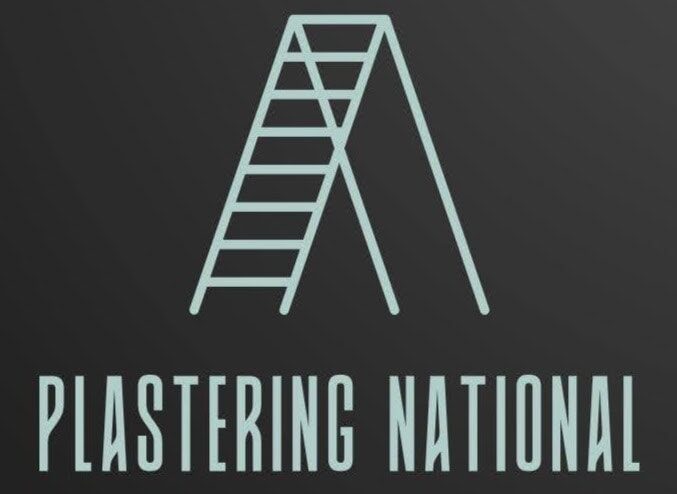Plaster moulding is an excellent way to add a touch of sophistication and charm to your home. Whether you’re a beginner or looking to refine your DIY skills, plaster moulding offers endless possibilities for creating beautiful architectural details that will enhance any room.
This guide will walk you through the essential steps for mastering plaster moulding, from the tools and materials needed to the techniques for crafting stunning pieces. With a little time, effort, and creativity, you can add custom, professional-looking moulding to your home.
Let’s Get Straight to the Point
Plaster moulding is a versatile and cost-effective way to enhance your home’s aesthetic appeal by adding custom decorative trim to ceilings, walls, and doors. This guide covers essential tools and materials, such as Plaster of Paris and moulding templates, to help you create stunning moulding for DIY projects.
Key steps include preparing the surface, mixing plaster, applying it with a template, and allowing it to set before finishing. Popular moulding types include crown moulding, baseboards, and chair rails. Plaster moulding is durable, easy to customise, and adds value to your home. With practice, you can create professional-looking results for any room.
What Is Plaster Moulding?
Plaster moulding refers to using plaster to create decorative trim or accents that frame architectural features, such as doors, windows, ceilings, and walls. It is commonly used to enhance a room’s aesthetic appeal by adding texture, depth, and intricate design details.
Due to its versatility and ability to form complex shapes, plaster is particularly ideal for creating custom, detailed moulding. It also provides a durable, long-lasting finish that can be easily maintained over time.
Want to transform your home with stunning plaster moulding? Get in touch today for expert help with your DIY projects!
Why Choose Plaster Moulding for DIY Projects?

Customisation and Aesthetics
Plaster moulding offers unparalleled versatility in design. From traditional styles like crown moulding to modern, sleek baseboards, plaster can be moulded into virtually any shape or style to suit the project. Unlike pre-made wooden trim, plaster can be customised to meet your exact specifications, whether you want ornate, intricate designs or simple, streamlined finishes.
This level of customisation allows you to personalise your space and achieve the look you truly desire.
Durability and Value
In addition to its aesthetic appeal, plaster moulding is highly durable. Plaster can last for decades without cracking or warping, making it a worthwhile investment for your home.
Moreover, plaster moulding enhances the overall value of a property, as it adds a timeless, classic look that appeals to many potential buyers.
Whether you’re renovating an old home or updating a modern space, plaster moulding can increase the attractiveness and functionality of your living environment.
Ready to add elegance to your space with custom plaster moulding? Contact us now for professional installation and advice!
Materials Needed for Plaster Moulding
Gathering all the necessary materials is essential before you begin your plaster moulding project. The following list covers the most common supplies required for making plaster moulding:
Plaster of Paris
Plaster of Paris is the most widely used material for moulding due to its ease of use and fast setting time. It’s inexpensive and can be easily mixed to the desired consistency.
Plaster of Paris is ideal for creating moulds and casting shapes because it is malleable in its wet form and hardens to a durable finish.
Moulding Templates
You’ll need a template to ensure that your plaster moulding is consistent and precise. A template is typically made from steel, wood, or flexible materials like polyurethane and used to guide the plaster as it’s applied.
Templates allow you to replicate intricate designs accurately and are essential for creating clean, uniform results.
Tools Required
For successful plaster moulding, you’ll need a few essential tools:
- Mixing container: To mix the plaster to a smooth, even consistency.
- Paintbrush: Used to apply bonding agents and plaster to the surface.
- Moulding template or trowel: To shape and smooth the plaster.
- Level: Ensure that your moulding lines are straight and consistent.
- Trowel and smoothing tool: These apply and shape the plaster once it’s on the surface.
- Sandpaper: To smooth out any imperfections once the plaster has set.
Steps for Creating Plaster Moulding
Once you have gathered all the necessary materials, you can begin creating your plaster moulding. Below are the detailed steps to follow:
Step 1: Prepare the Surface
Before applying the plaster, ensure that the surface is clean and free of dust, dirt, and grease. Any debris on the surface could interfere with how well the plaster adheres. Wipe down the area with a damp cloth to remove any residue for walls or ceilings. If working on a wooden surface, lightly sand it to create a better bonding surface.
Step 2: Create the Moulding Template
Using your chosen material for the template (such as steel or wood), carefully cut out the shape of the moulding. Leave enough space for a “leg” or edge resting against the surface to guide the plaster into the correct position.
The template should be large enough to accommodate the overall size of the moulding and allow for any necessary adjustments.
Step 3: Mix and Apply Plaster
Mix the plaster according to the manufacturer’s instructions, ensuring a smooth, lump-free consistency. When applying plaster to the surface, use a paintbrush or a trowel to spread it evenly.
Work in small sections to prevent the plaster from setting before you’ve had a chance to shape it. Carefully follow the moulding template as you apply the plaster, filling in all areas to ensure an even, clean finish.
Step 4: Smooth and Shape the Moulding
Once the plaster is applied, shape it with a trowel or smoothing tool. For more intricate designs, use a small brush to carefully carve out details or add extra layers of plaster to build up areas that need more definition. The key to successful plaster moulding is working quickly but carefully to ensure that the plaster is smooth and even.
Step 5: Allow Plaster to Set
Allow the plaster to dry completely before handling it. Depending on the thickness of the moulding and environmental factors, this could take anywhere from 12 to 24 hours. Be patient and avoid disturbing the moulding while it sets to ensure a solid finish.
Step 6: Sand and Finish
Once the plaster has hardened, gently sand any rough or uneven spots with fine-grit sandpaper. After smoothing out imperfections, you can paint or decorate the moulding to match the rest of your space. Apply a coat of paint to seal the plaster and protect it from damage.
Common Types of Plaster Moulding
Crown Moulding
Crown moulding is one of the most popular and versatile types of plaster moulding. It is typically applied at the junction of the wall and ceiling to create a seamless transition and add a finishing touch to a room. Depending on your desired style, crown moulding can be simple and understated or highly decorative.
Baseboards and Skirting
Plaster baseboards provide a classic, clean finish at the base of the walls, offering both an aesthetic upgrade and protection from damage. Skirting boards are often used in high-traffic areas to prevent wear and tear on the wall.
Chair Rail
Chair rail moulding is often applied to protect walls from damage caused by furniture. It’s typically used in dining rooms, hallways, or other spaces where there’s a risk of furniture scraping against the wall. Additionally, chair rail can create a visual division between two wall colours or textures.
Tips for Working with Plaster Moulding
Safety First
Plaster dust can be harmful when inhaled, so always work in a well-ventilated area. Wear a dust mask, goggles, and gloves to protect yourself from debris and irritation.
Practice on Smaller Pieces
If you’re new to plaster moulding, consider practising on smaller test pieces before attempting larger sections. This will allow you to refine your technique and avoid mistakes that could be difficult to fix on a larger scale.
Work in Sections
When applying plaster, work in manageable sections. This ensures the plaster doesn’t set before you’ve had a chance to finish shaping it, and it helps you maintain even lines and consistent design elements.
Troubleshooting Common Issues

Cracks in Plaster
Cracks in plaster often occur if it is applied too thinly or dries too quickly. To fix this, mix more plaster, fill the crack, and smooth it out. Be sure to sand the area after it has dried to achieve a smooth surface.
Uneven Lines
If your plaster isn’t sitting evenly, it could be due to an incorrectly aligned template. Ensure that your template is level and securely attached before applying plaster. This will help maintain consistent lines and avoid the need for excessive sanding.
When to Call a Professional
Complex Projects
If your plaster moulding project involves intricate designs or complex installations, call in a professional. Expert plasterers can handle challenging projects and ensure the highest-quality final result.
Historic Homes
If you’re working with historical plasterwork, it’s best to consult a specialist. Preserving the integrity and authenticity of your home’s original plaster moulding is essential; a professional can help you achieve that.
In conclusion, plaster moulding is an affordable way to enhance your home’s look. With the right materials and techniques, anyone can create beautiful trim to elevate your space. Whether it’s crown moulding, baseboards, or chair rails, start crafting custom mouldings that add value and character to your home for years.

